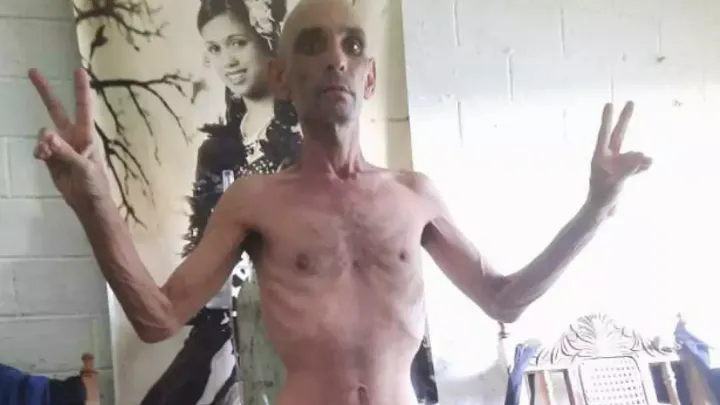Increase in drug consumption in Cuba, alarm or convenience for the regime?
People from Havana consider the government's warnings about adolescent consumption as an attempt to divert attention from other serious problems.

The regime’s alert regarding the increase in drug consumption has awakened suspicions and speculations among many Cubans. Is it proportional to what is really happening, or is it a matter of convenience to divert attention toward a permanent phenomenon, at least in the last ten years?
“I don’t know anyone who can deny that drug consumption has spread in Cuba, but this is a very old issue, and that’s precisely what’s curious. Why does the Government now acknowledge it with such a level of stridency?” says Rodrigo, a 30-year-old young man from Havana and occasional consumer of the synthetic cannabinoid popularly known on the Island as “Químico.”
“Using the screen that there is an ‘outbreak’ of adolescents consuming Químico in both schools and streets is to want to erase that in previous times, thousands of minors and adolescents consumed other types of drugs, mainly marijuana and pills. It could be said that Químico is new, compared to those times when the dust [cocaine] and weed [marijuana] reigned in the streets, and they had more demand than potable water,” adds Rodrigo, who invites us to look in the press controlled by the Communist Party “who the Government is blaming for this supposed Químico pandemic.”
Last June 26, the pro-government portal Cubadebate accused the United States Government of being the main emitter of drugs to the Island: “in Cuba, this substance called Químico is introduced into the national territory through passengers and package delivery agencies, easily masked in food, condiments, household effects, in liquid state, shredding, paper sheets and in powder. It is noted that small amounts of this drug generate a high level of addiction and perception of consumption, mainly among young people,” highlighted the article.
“Cuba is not a drug-producing country, warehouse, or transit to third countries,” added Cubadebate in a statement that none of the Havana residents consulted could support and that casts doubt on the invulnerability of the Cuban coasts, whose custody is the responsibility of the Ministry of the Interior (MININT) and the Revolutionary Armed Forces (FAR).
“If there was a wave of drug consumption to the magnitude they claim, whether it’s Químico or any other substance, the Government then has a huge leak across all borders,” says Dylan, a 25-year-old young man from Havana, who claims to consume Químico for recreational purposes.
“To be clear, at least in Havana the drug known as Piedra is consumed five times more than Químico. Considering that Piedra costs 1,000 pesos and Químico 200 pesos, logic indicates that minors and adolescents should be more consumers of Químico because of the cost of the product. Therefore, if there was a massive consumption of Químico among minors, we would have to see, necessarily, dozens of these minors like zombies in all the classrooms of all the schools and on the corners of each neighborhood. Químico has an effect that is impossible to disguise. Personally, I think the alarm is greatly exaggerated,” Dylan believes.
The first references to Químico, agreed upon by the young Havana residents consulted, date from 2014. Then, “three-gram packages were sold for approximately three dollars at service stations, stores, funeral homes, and internet pages.” The brands with the highest demand in those years were Scooby-Doo, King Kong, La Bailarina, and Ojo de Diablo. Its price since then has not changed: between 100 and 200 pesos.
Few of the Havana residents consulted remember one of the most feared laws to date by the “jíbaros” on the Island: the State Council Decree-Law 232/03, passed precisely in one of those “times when drug trafficking in Cuba had the hot track.”
“Decree 232 included, among other things, the seizure of the dwelling whether or not the owner was the one who trafficked drugs, and regardless of whether the trafficking was with marijuana, cocaine, or controlled medications. And yes, right now in Cuba the consumption of Químico has soared, but in the same way, the consumption of alcohol and the prices of food and medicines have soared. Why doesn’t the Government ask the right question: What is the reason that minors, adolescents, and young people go through life ‘chemically enhanced’? What recreational options are there for them that fit their parents’ budget? I’ll leave it there,” says Liam, an employee and occasionally a dealer at one of Havana Vieja’s most exclusive bars.
In the rock community of Havana, the veterans also harbor suspicions about the insistence of the Cuban regime, for months now, in creating an environment of a drug consumption pandemic, “using as an excuse that such consumptions are at the school level.”
“What I see is a cyclical method of the Government to divert attention, in this case from the unprecedented economic crisis that is entrenched in the country. Or do we forget what was the excuse to stop the Rock & Sida project and the closure of its emblematic headquarters, El Patio de María, in October 2003? This space had become overnight into a den of massive consumption of drugs,” remembers Sergio Gabriel López, cultural promoter and rock enthusiast of the Patio de María from its foundation until its closure.
For the visual artist Julio Llópiz-Casal, the regime’s alarm about the alleged pandemic of Químico consumption could be a smokescreen.
“Cuba is trapped in a destructive process that will never end because it repeats in a loop. This is not a metaphor; it is, in fact, a serious threat to those who live on the Island. In a good part of the complaints and coverage of violent murders in street fights, assaults, robberies, and femicides, they have referred to the consumption of a drug that dangerously alters behavior and which they call Químico,” he adds.
“There are serious alerts around Fentanyl around the world, because, among other things, its production is cheap and fast. Químico could be combined Fentanyl that turns it into that weapon of mass destruction. The situation could be more delicate than imaginable,” he says.
“Since I was very young, I’ve heard, especially from conspiracy theorists and people on the left, the story that in the 70s the power in the United States spread Heroin through the streets of the country to end from within the hippies, activism, and other inconformities. Many people would put their hands in the fire to prove this is true. In today’s Cuba, sunk in helplessness, hunger and terror, and full of political prisoners, it would not be unreasonable to think that Castrismo is applying a similar plan. Castrismo could be using induced violence as a catalyst and tool for control,” concludes Llópiz-Casal.




Comments ()